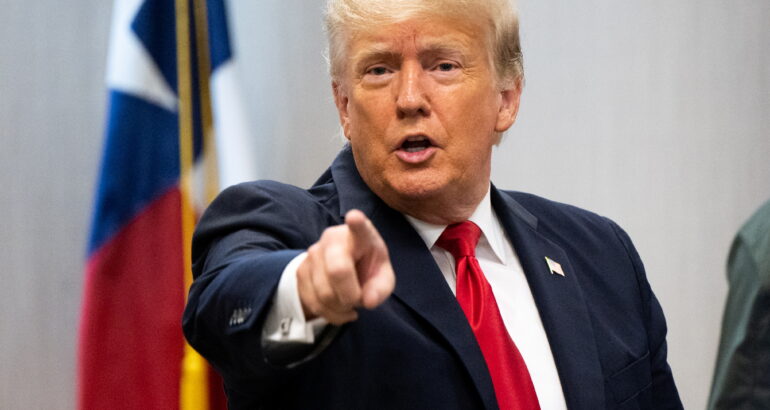President Donald Trump has entered uncharted legal territory by invoking a 1977 emergency sanctions law to justify imposing tariffs on imports from Canada, Mexico, and China.
The tariffs—a 25% duty on Canadian and Mexican goods and an additional 10% on Chinese imports—are aimed at combating the flow of fentanyl and addressing illegal immigration into the United States.
Legal and trade experts have raised concerns over the use of the International Emergency Economic Powers Act (IEEPA) to enforce these tariffs, noting that the law has never been tested in this context. As a result, Trump’s decision is likely to face immediate challenges in court, which could set significant legal precedents.
On Saturday, Trump declared a national emergency under IEEPA, citing the “extraordinary threat” posed by fentanyl trafficking and illegal immigration. This law, typically used to impose economic sanctions during times of national crisis, has been invoked before in response to issues such as Russia’s actions in Ukraine. The law allows the president to take swift action to impose economic measures, like sanctions, without the extensive investigations or public consultations typically required for trade duties.
Tim Brightbill, co-chair of the international trade practice at the law firm Wiley Rein, noted that while courts have generally supported the president’s authority to act in emergencies, the question remains whether IEEPA can be legitimately applied to tariffs, as the law has historically been used for sanctions, not trade restrictions. Brightbill suggested that while industry groups may attempt to block the tariffs in court, they could face significant hurdles in doing so.
William Reinsch, a trade expert at the Center for Strategic and International Studies, pointed out that judges are unlikely to challenge the president’s definition of an emergency. “The emergency is whatever he says it is,” he said.
Historical Precedents and Legal Concerns
The closest historical parallel to Trump’s actions is former President Richard Nixon’s use of the 1917 Trading With the Enemy Act, the predecessor to IEEPA, to impose a 10% tariff in 1971. This was done in response to a balance-of-payments crisis after the U.S. left the gold standard. The courts upheld Nixon’s decision, but legal experts like Jennifer Hillman, a trade law professor at Georgetown University, argue that Trump’s use of IEEPA may not meet the same criteria.
Hillman questioned whether there is a clear connection between the emergency—fentanyl and immigration—and the sweeping tariffs on goods from Canada, Mexico, and China. Unlike Nixon’s case, where the economic emergency had a direct connection to the importation of goods, the justification for Trump’s tariffs seems less direct, as they would apply to all imports rather than targeting specific items linked to the drug trade or immigration.
In 2019, Trump had threatened to use IEEPA to impose a 5% tariff on Mexican goods over border security issues but did not follow through after Mexico agreed to strengthen its border controls. He also used the National Emergencies Act during his first term to fund the construction of a border wall.
If the courts uphold the use of IEEPA for trade tariffs, Peter Harrell, a national security lawyer and senior fellow at the Center for a New American Security, argued that Congress should amend the law to ensure greater oversight of such decisions in the future.


